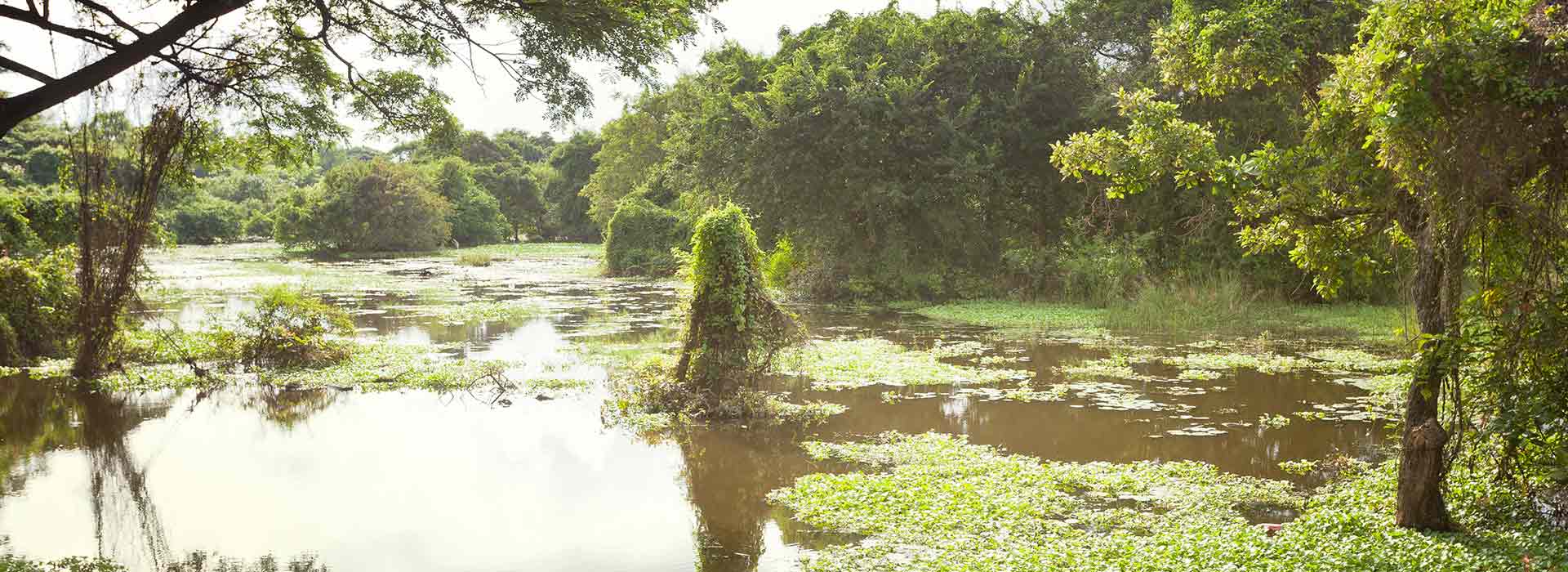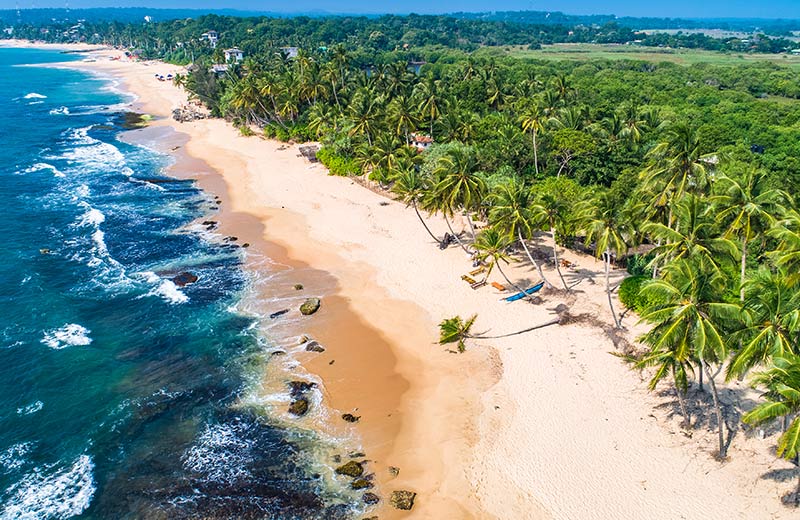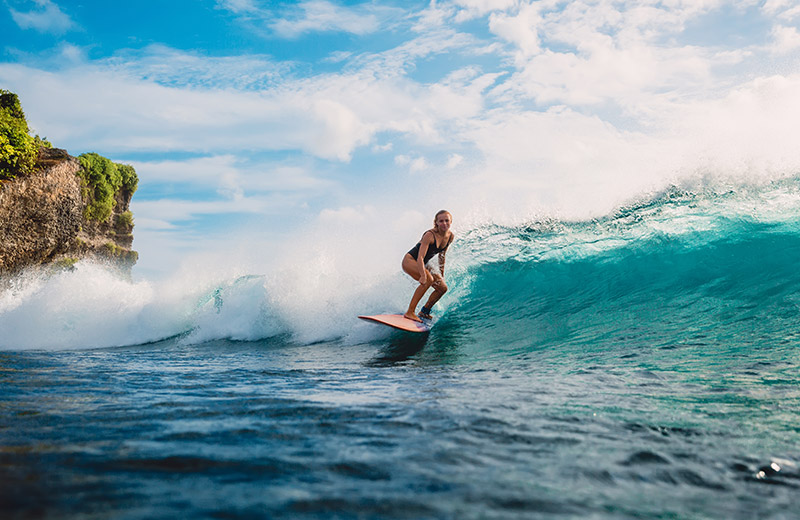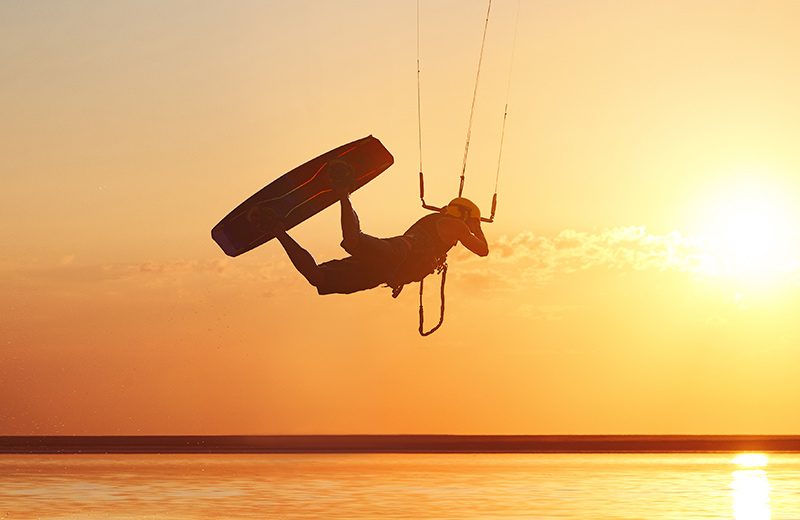Explore Chilaw in a Day
Known for the warm hospitality of its people, Sri Lanka is a haven of culture, history and picturesque holidays for any and every traveller. The island is conveniently small enough that if you’re short on time, you can easily cover several attractions in an area within one day. The town of Chilaw on Sri Lanka’s balmy western coast is one such setting, where tourists can zip through a fascinating tour of the island’s history, wildlife and natural ecosystems, all before nightfall. The area is best visited between October and March to avoid the monsoons. Here are three major stops you won’t want to miss during your one-day exploration of Chilaw.
Chilaw Lagoon
Your journey begins at Chilaw Lagoon, about 80 kilometres north of Colombo. The lagoon stretches to a length of nearly 30 kilometres, reaching a width of 2 kilometres at its broadest point, and is home to a wide variety of fish including catfish, sardines, snappers and seabass. There are approximately 20 different species of fish, prawns and crabs that live in the lagoon that are of commercial importance to the country. Sri Lanka has recognized Chilaw Lagoon as a major source of livelihood for more than a thousand families that live within its settlements, and is aiming to conserve the lagoon’s environment whilst supporting the sustainable development of its fisheries.
Fringed by mangrove forests and marshland, the lagoon’s ecosystems are known to protect the coast from erosion and storm surges, and to shelter young fish that would struggle to survive if they were to venture outside the safety of its confines. The area hosts the most species-divergent mangrove forests along Sri Lanka’s western coast, with around 16 different mangrove species attached to the lagoon and surrounding wetlands.
Sri Munneswaram Devasthanam
An easy ten-minute drive from the lagoon lies Sri Munneswaram Devasthanam temple – better known simply as the Munneswaram temple. It is one of the Pancha Ishwarams – a group of five ancient kovils that are located along Sri Lanka’s coast and dedicated to Shiva, one of Hinduism’s principal deities. The Munneswaram temple complex contains five different temples, including one that is honoured by Buddhist worshipers.
The temple has been destroyed twice by foreign attacks. First, in 1578, when it was devastated by the Portuguese and subsequently replaced with a Roman Catholic chapel. It is said that the local population managed to save several idols from the temple before the destruction began, and that the temple was eventually rebuilt by a Sri Lankan king. However, it was attacked again by the Portuguese in the early 17th century – and again rebuilt, this time by locals.
Anawilundawa Wetland Sanctuary
Located in Puttalam, a 30-minute drive north of the Munneswaram temple, the Anawilundawa Wetland Sanctuary is one of six Ramsar Sites in Sri Lanka, which means that it is a wetland of international importance. It is an important ecotourism site that spans an area of nearly 1,400 hectares and features a collision of three different ecosystems: the wetlands of the forest (including mangrove swamps and freshwater swamps); the ecosystem of the saltwater coasts; and the freshwater lakes. The combination of these individual ecosystems has created a unique nesting and breeding grounds for more than 150 different species of birds that have made their homes here.
The sanctuary is also home to around 20 different species of mammals, 70 species of butterflies, and more than half of Sri Lanka’s species of freshwater fish. To best take advantage of the natural beauty of the wetlands, plan your visit between the months of October and April, which is when the rarer migratory birds visit. Activities that can be arranged at the sanctuary include birdwatching tours, hiking expeditions and boat-ride adventures.



